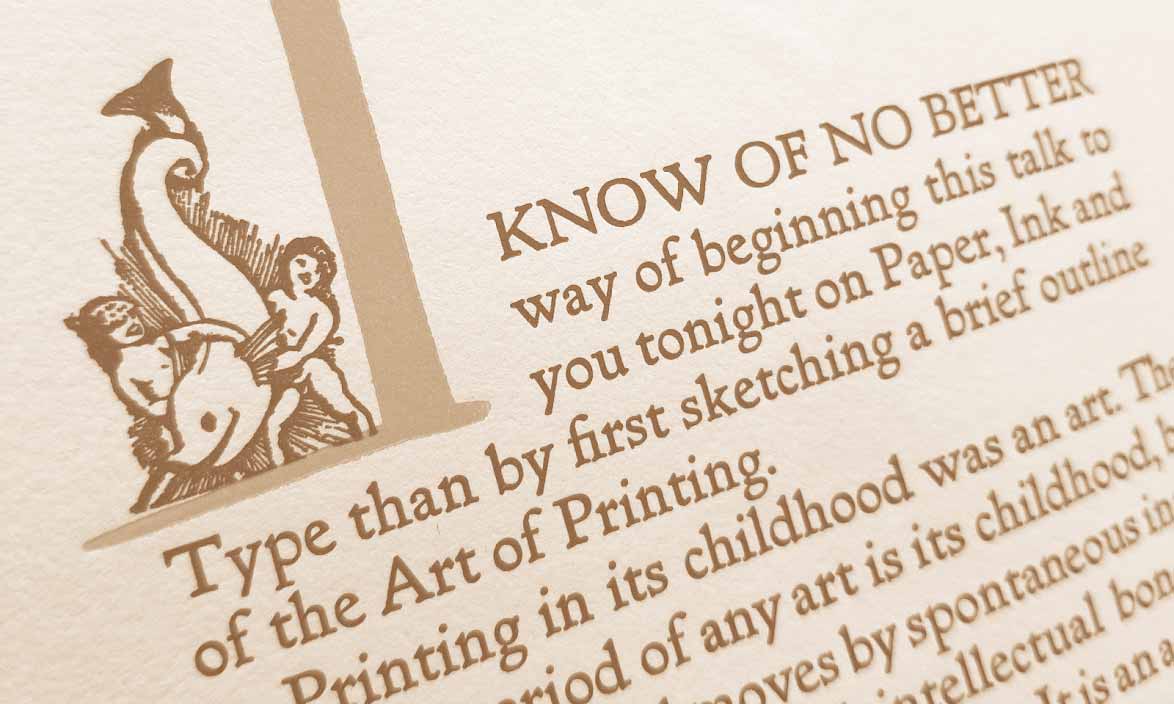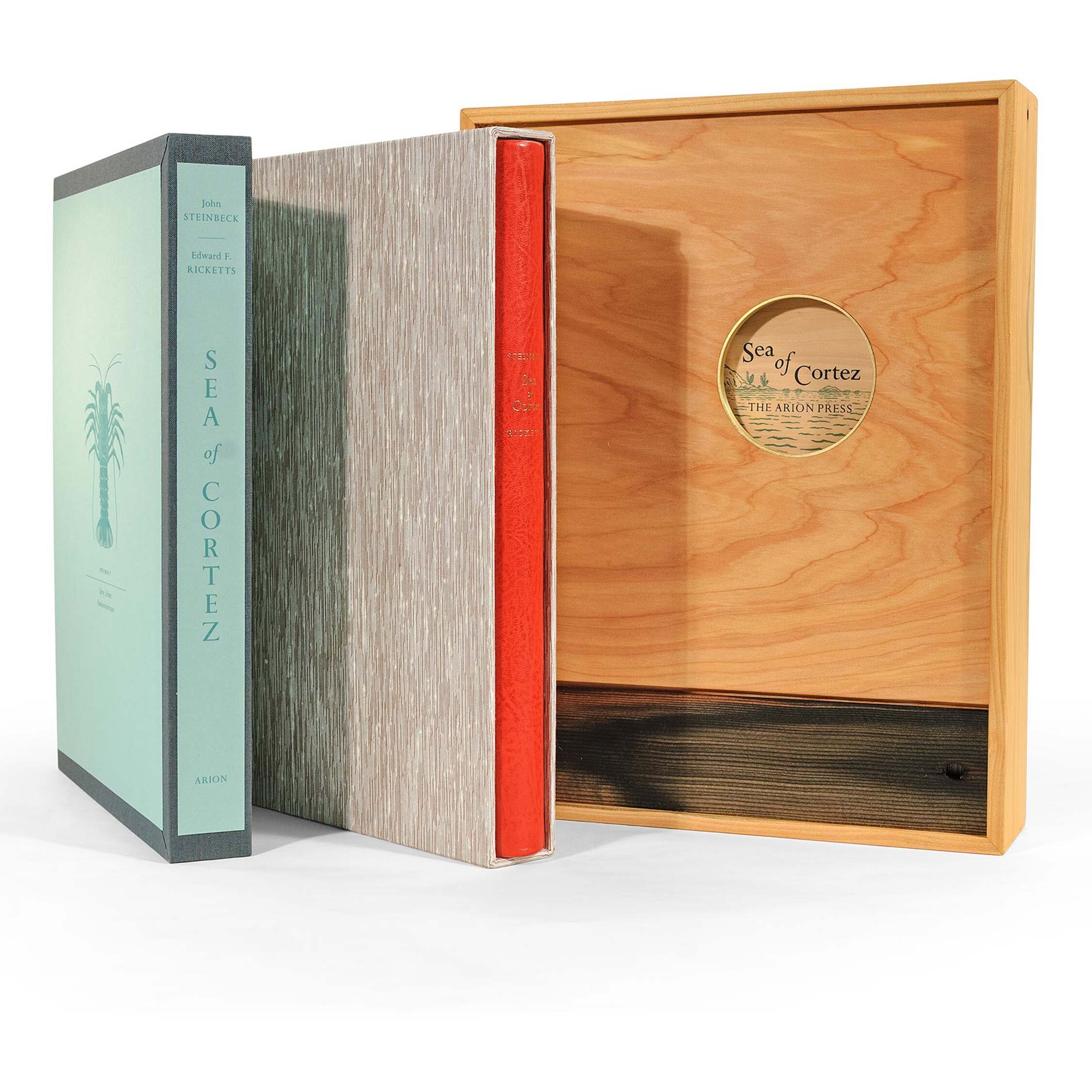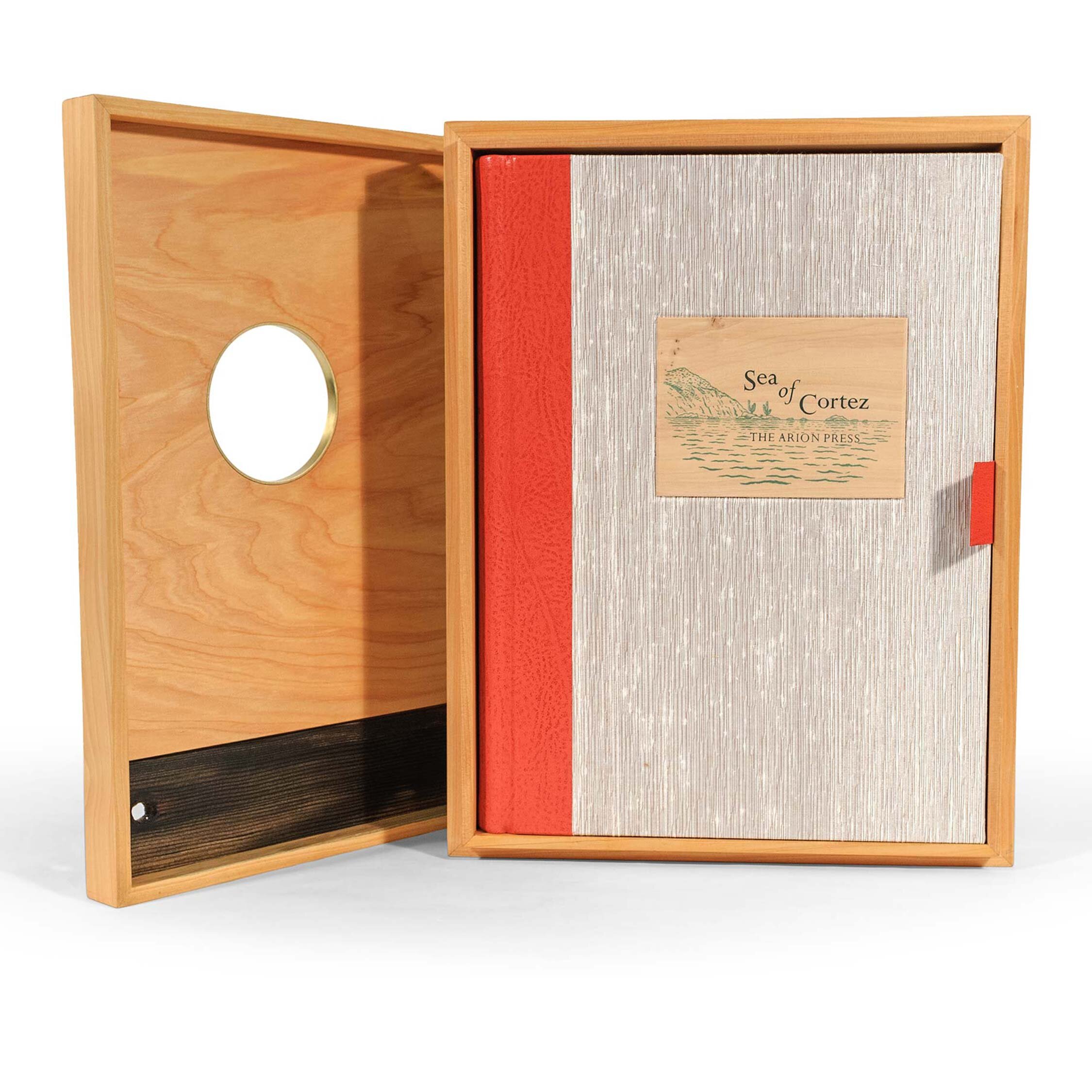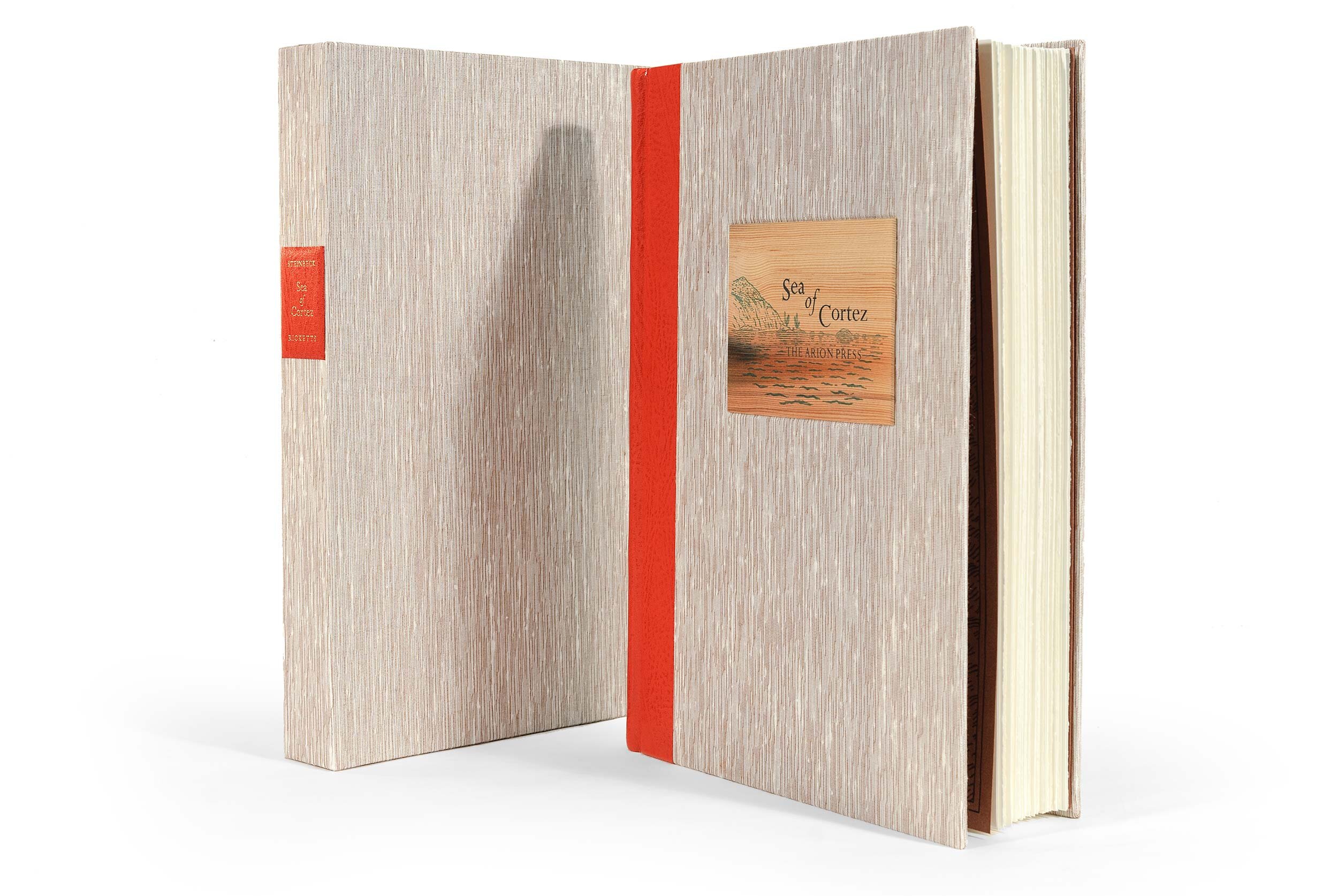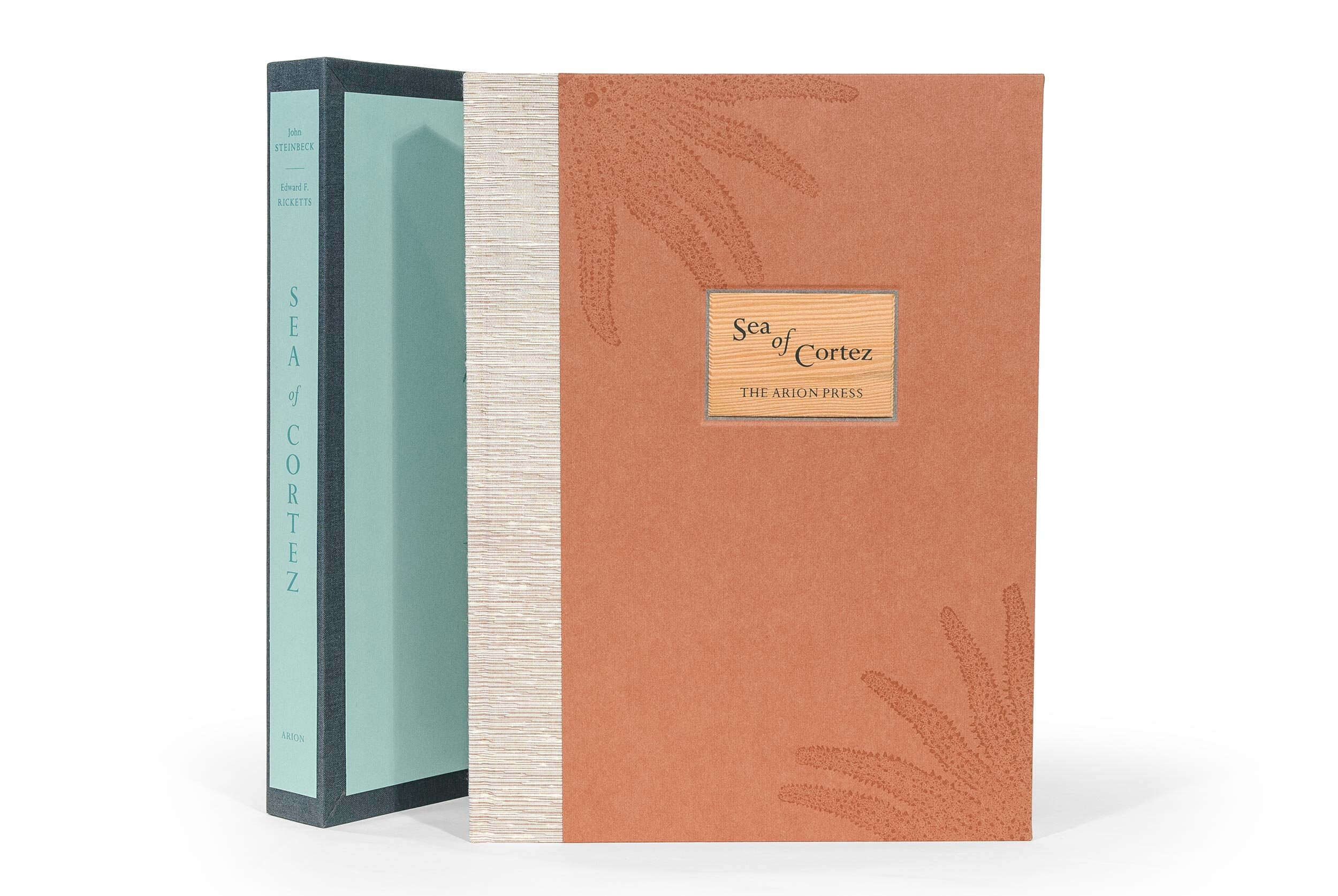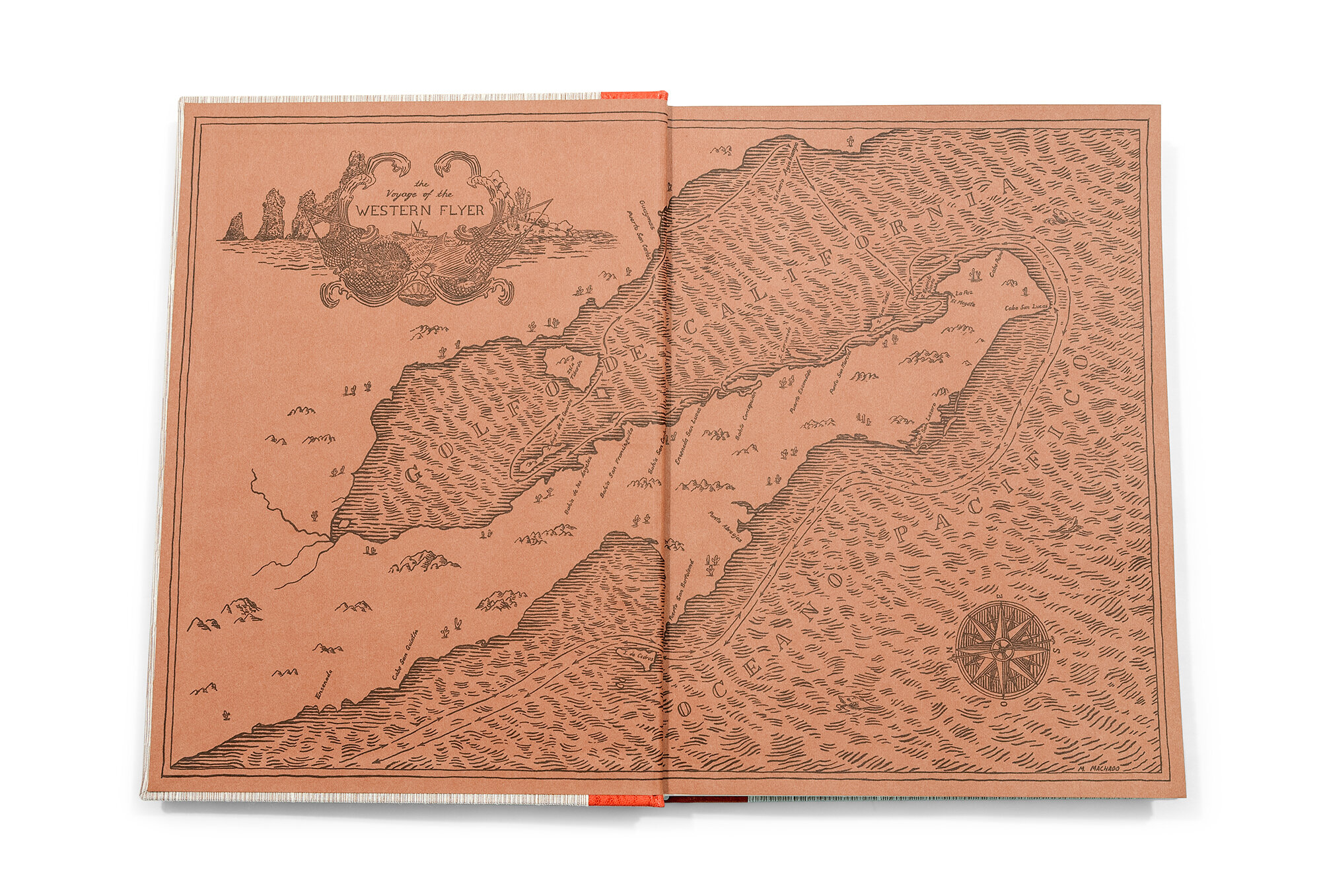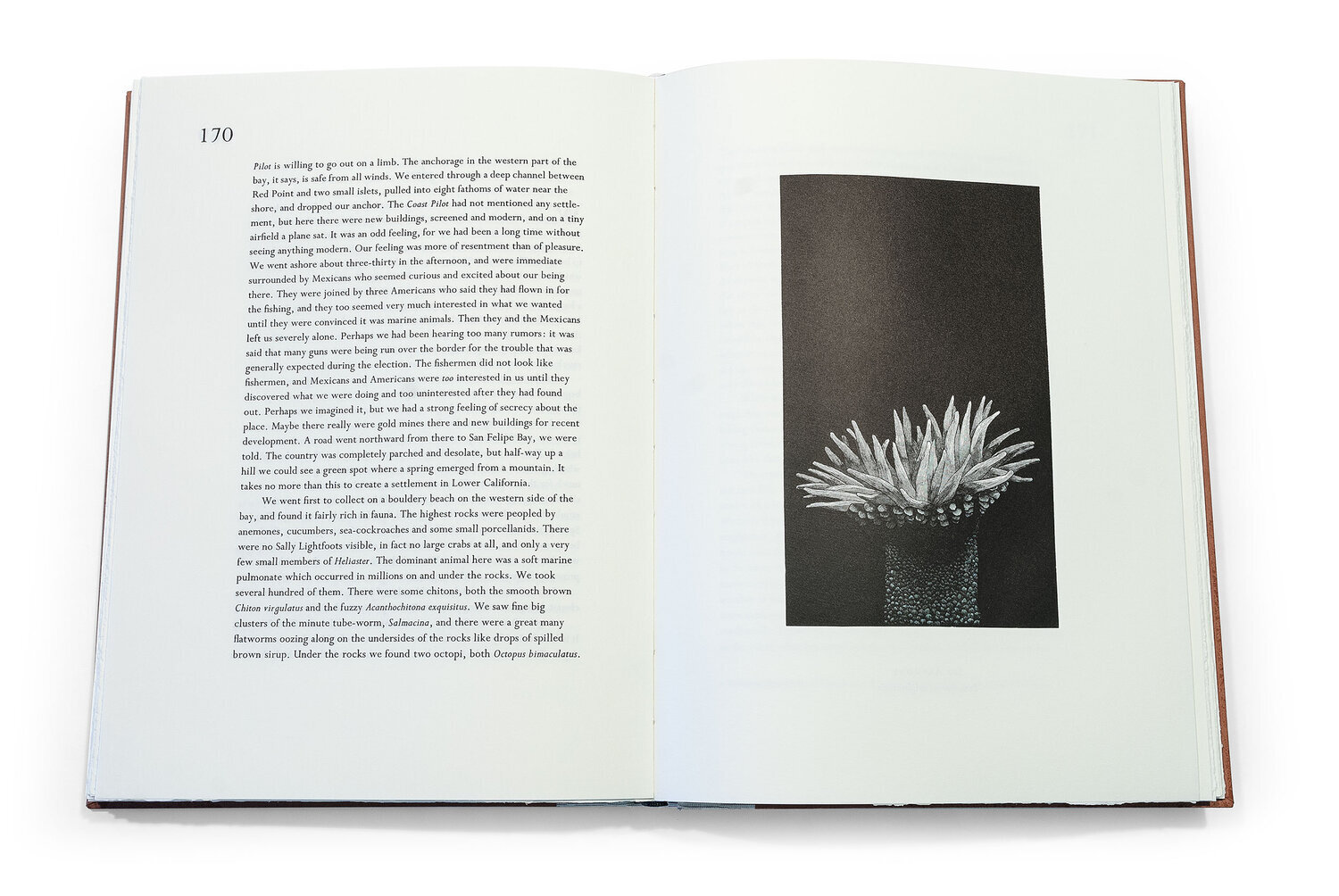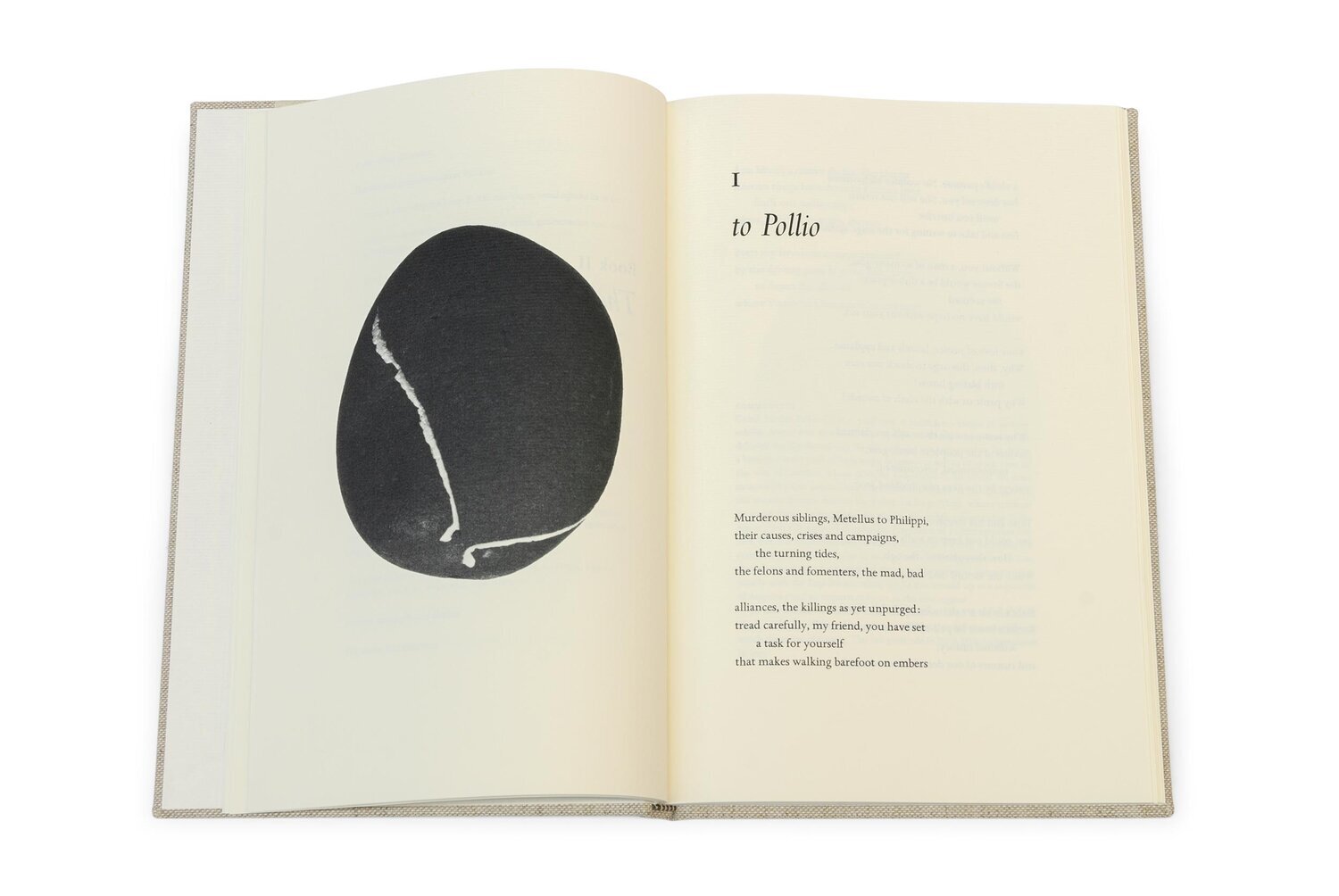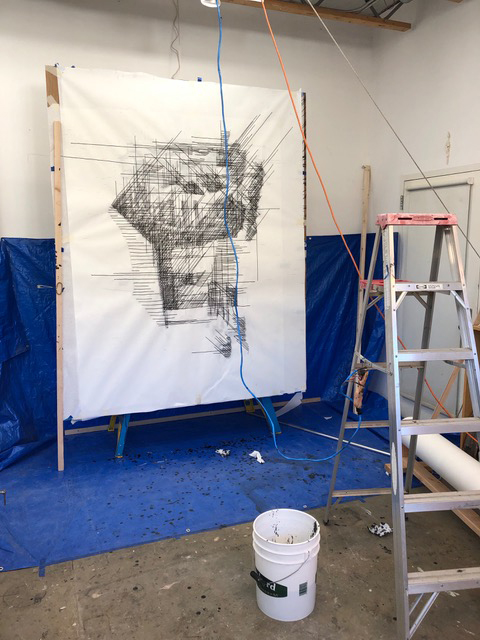Recent & Featured Titles
Sea of Cortez: A Leisurely Journal of Travel and Research
by John Steinbeck and Edward F. Ricketts, with woodblock engravings by Richard Wagener, map illustration by Martin Machado, Deluxe edition box by Jonathan Anzalone
Mentioned in the Wall Street Journal’s 2020 “Who Read What.”
Celebrating the 80th anniversary of the landmark voyage of John Steinbeck and Ed Ricketts, the Arion edition of Sea of Cortez is truly a collaboration in the spirit of its authors. Wood salvaged from the Western Flyer, the boat that Steinbeck and Ricketts chartered for their trip, is incorporated into each copy.
Horace’s Odes, Book II
translation by Michael Taylor, with art by Dennis Letbetter
Michael Taylor’s translation of Book I of the Odes was published in 1992 by preeminent San Francisco printer and book designer Jack Stauffacher. Arion Press has endeavored to continue the series with the publication of Book II featuring the work of photographer Dennis Letbetter, who collaborated with Stauffacher for over 30 years.
Frequently translated, often weakened, the Odes have a reputation for difficulty and have challenged every translator who sought to bridge the distance between the originals and a language very different from anything the poet spoke. The poems represent Horace at his best: highly compressed, full of energy and life, demonstrating unsparing observations of his contemporaries. Michael Taylor’s new translations respond to this vitality, and reach for the vibrancy behind the classical facade.
Frankenstein; or, The Modern Prometheus
by Mary Wollstonecraft Shelley, with art by Tim Hawkinson
In celebration of the 200th anniversary of its publication, we are pleased to announce a new limited edition artist book collaboration with Tim Hawkinson: Mary Shelley’s Frankenstein; or The Modern Prometheus. The book features and introduction by Todd Hosfelt, proprietor of the Hosfelt Gallery in San Francisco, and nine hypodermic ink drip drawings and a two-color title page vignette by Hawkinson. It is issued in both Standard and Deluxe editions and is Hawkinson’s first artist book.
For the project, Hawkinson built a customized pen tool incorporating a hypodermic needle stylus and gravity-fed ink reservoir. Sheets of butcher paper were pinned to a board fixed to the wall by means of a turntable. These mechanisms in place, a series of horizontal lines was made on the paper. With each horizontal mark, ink dribbled downwards. The paper was spun and the process repeated from different angles to construct a picture. When the drawings are sized-down to fit the pages of the book, the accumulation of lines creates an effect similar to the cross-hatching incised into an etching plate. The resulting black and white drawings appear both surprisingly modern and timeless, departing from the gothic visuals traditionally associated with Dr. Frankenstein’s tale, yet growing directly from the heart of Shelley’s story.
The Fairy-Tales of Oscar Wilde, with art by Sandow Birk
Accompanied by the drawings of artist Sandow Birk, whose images deftly extract messages from the stories and capture them in the light of modern-day, the Arion Press edition of The Fairy Tales of Oscar Wilde is an essential piece in the puzzle of the writer’s work.
Birk’s artworks capture both the contradiction and the complexity of the stories, illuminating their timeless themes through imagery that bears a startling and immediate familiarity to today’s reader. The stark lines and style might at first trick an unsuspecting viewer into believing they do hail from Victorian times, but the content is very much of the now.
The Boobus and the Bunnyduck - An original artist book by Jess
The Boobus and the Bunnyduck is a full-scale, full-color facsimile of the original unique artist book made by Jess Collins in 1957. Our edition of 100 copies is almost sold out.
Poet Michael McClure wrote the story for his daughter Jane, nicknamed “Boobus”. In the 1950s the McClures were friends of Jess and his partner Robert Duncan, visiting them frequently after their return from Mallorca and Black Mountain College. It is likely that Michael showed them his children’s story in 1956 or 1957; Jess proceeded to illustrate it using ink and colored wax crayons. Crayons, usually thought of as art materials for children, were favored by Jess and Robert for the drawings they often made as after-dinner entertainment.
Learn more…

